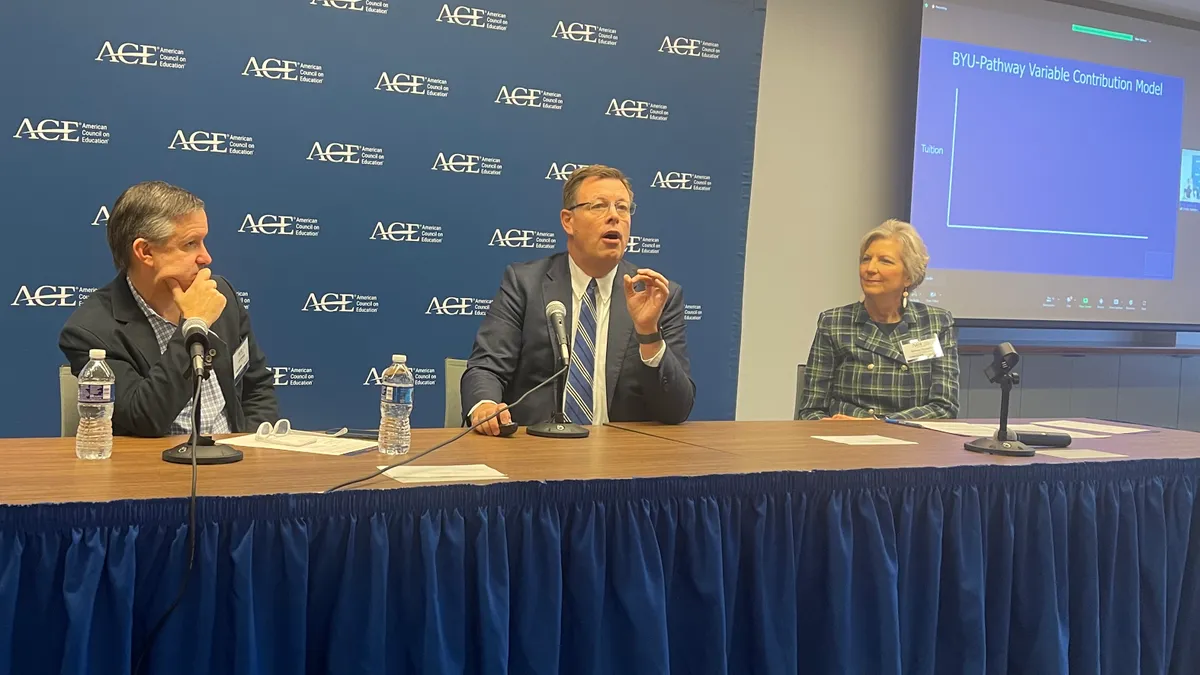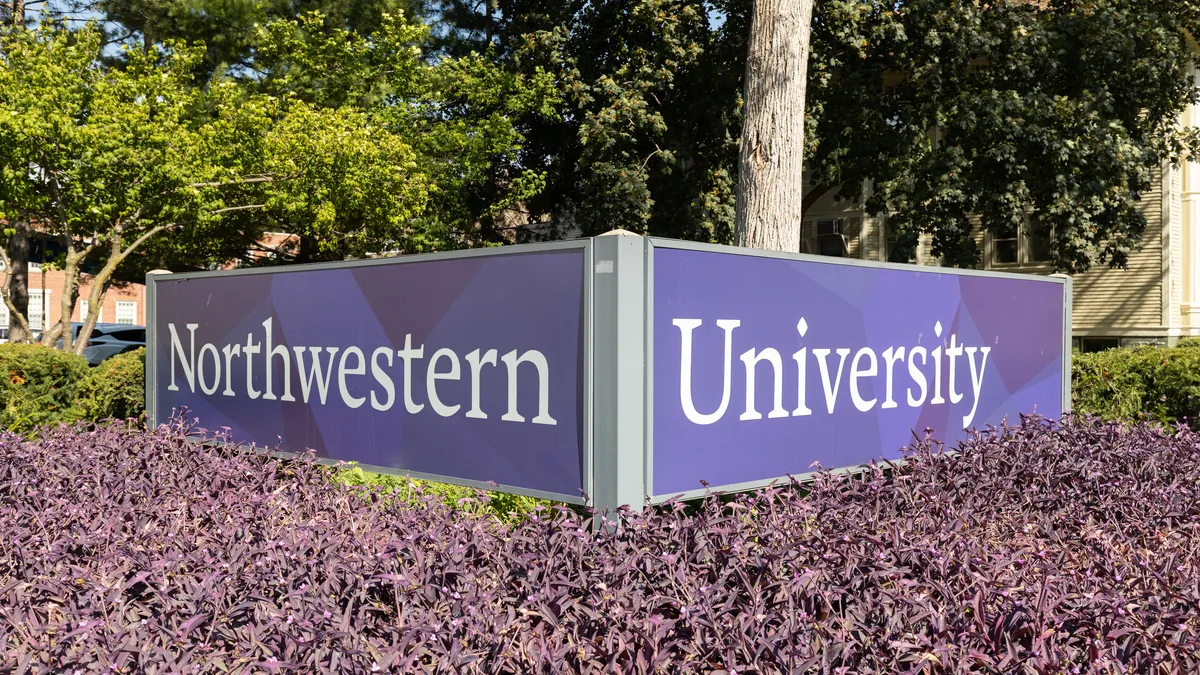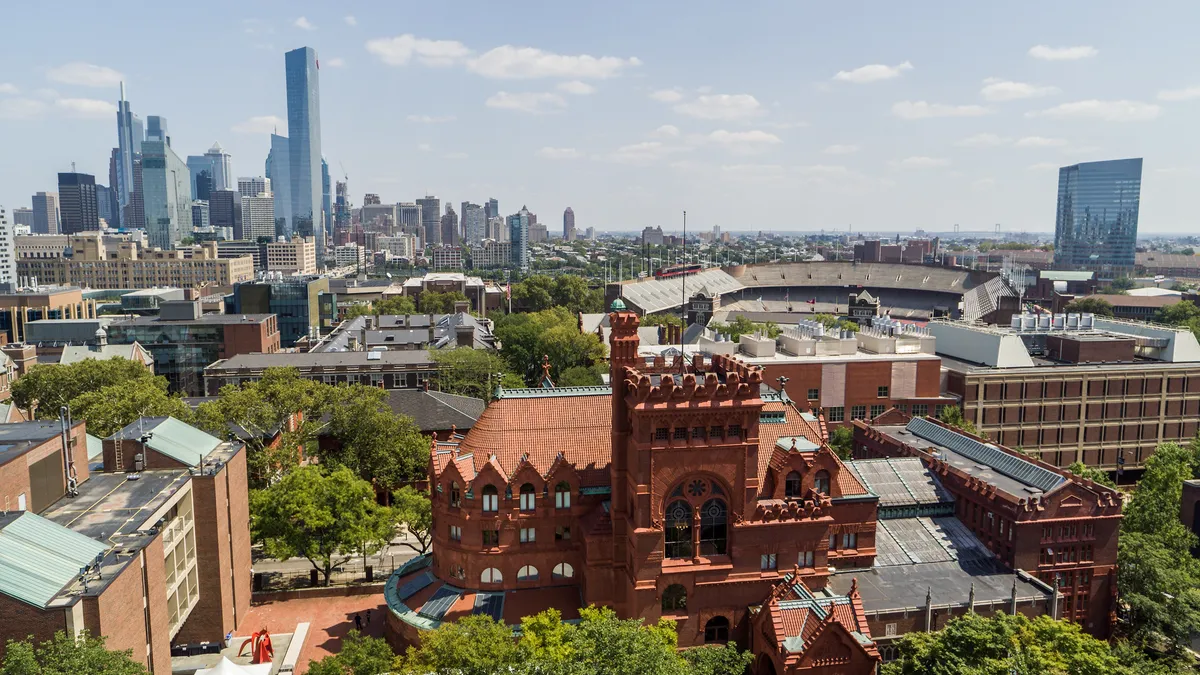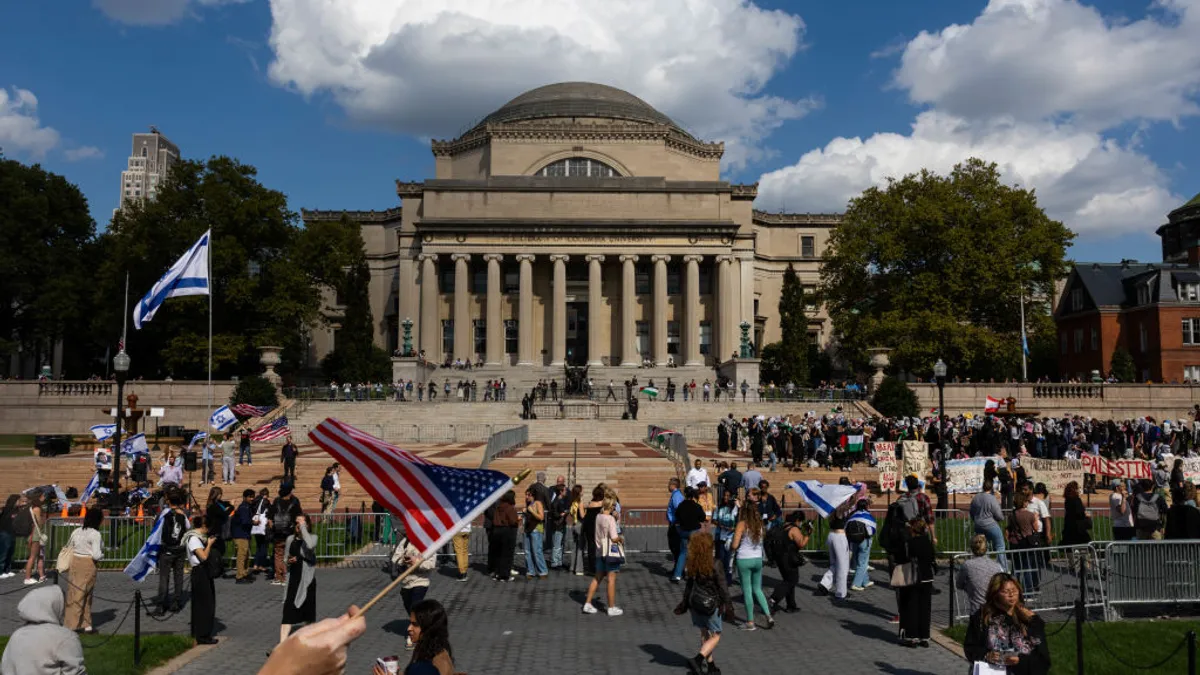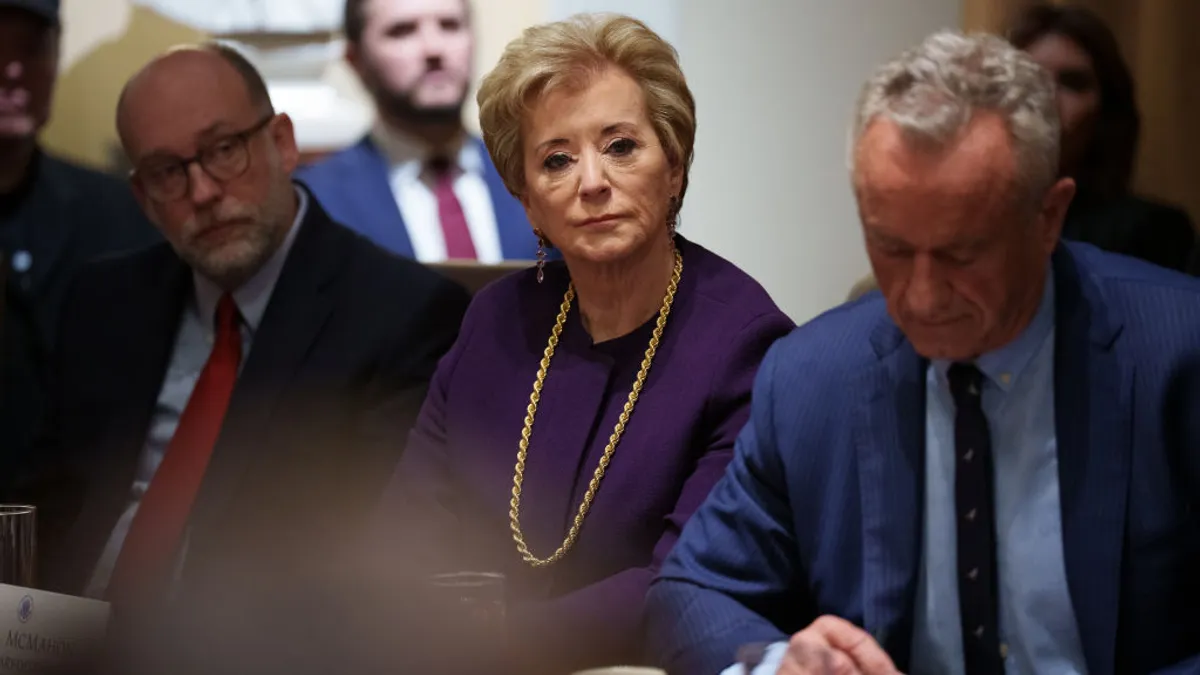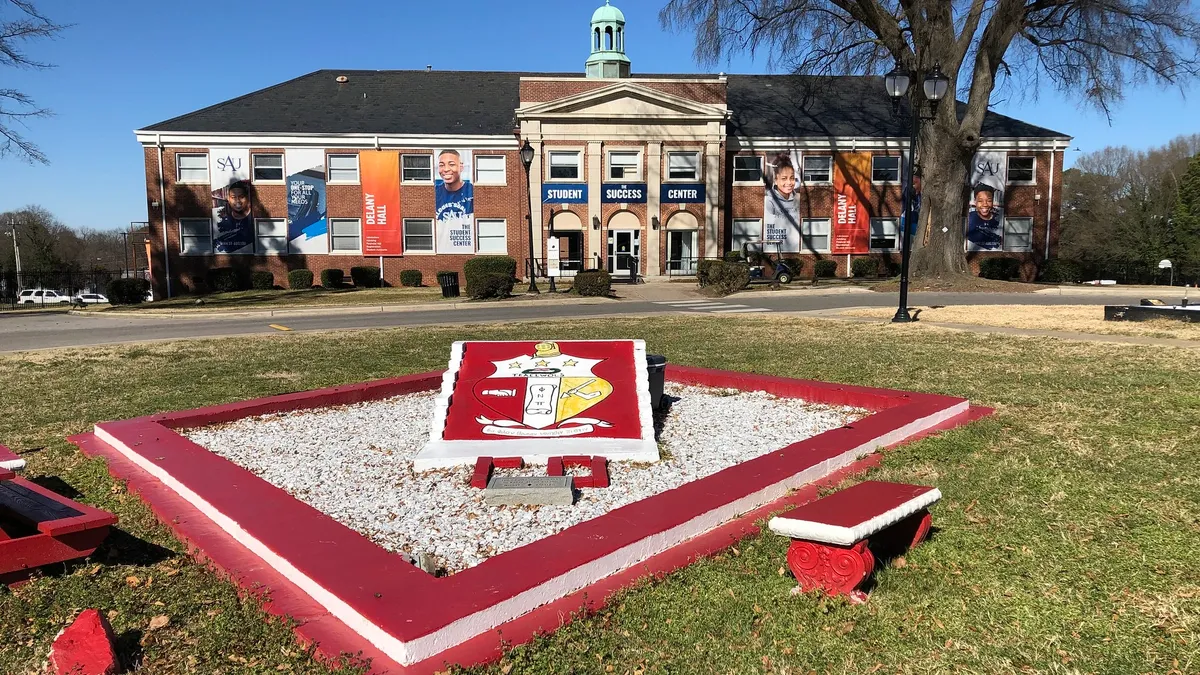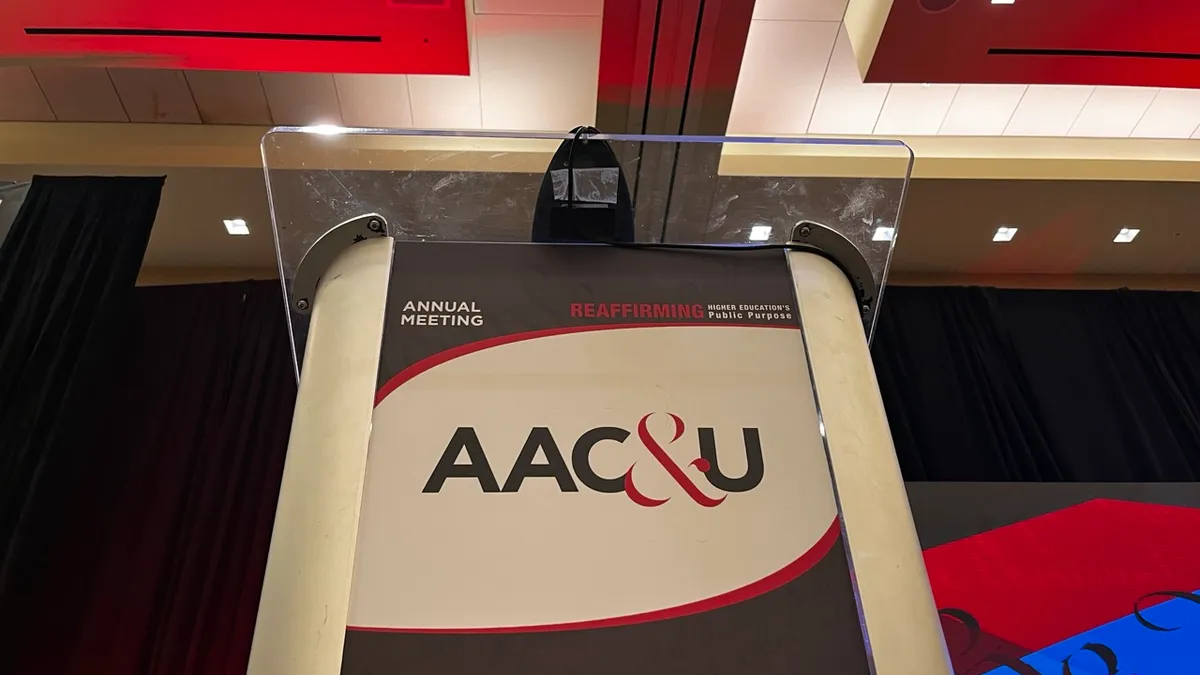WASHINGTON — Oftentimes, when students enroll and arrive at a religious college, it's the first time they feel like they fit in, Clark Gilbert, the former president of Brigham Young University-Idaho and the BYU online program, Pathway Worldwide, told a crowd of faith-based institution presidents Thursday.
Gilbert, whose former institutions are operated by the Church of Jesus Christ of Latter-day Saints, joked he stood out in high school — that his friends would tap him as the designated driver when they would drink alcohol. As soon as he matriculated to a religious campus, he felt at ease.
Therein lies part of religious institutions’ strength, Gilbert said: They serve as havens in the increasingly secular country. He and other officials said religious colleges should capitalize on their niches and not attempt to mimic the rest of the higher education world.
That’s relevant advice to many institutions. Not every college can be a Harvard or a Southern New Hampshire. But some, in the face of sliding enrollment, financial pressures and a perceived need to fortify online education options, have attempted to copy operating models that may not fit their mission.
Some ideas can be replicated and scaled, but religious colleges should “lean into your distinctiveness,” said Shirley Hoogstra, president of the Council of Christian Colleges and Universities, told the leaders.
The American Council on Education, higher ed’s primary lobby, convened them to discuss how their uniqueness can help solve some of postsecondary education’s most persistent and vexing problems: access, affordability and completion.
Several attendees described the event as “historic.” No one could think of another time presidents from colleges of varying religious backgrounds assembled to hear each other's thoughts.
Officials presented ideas that might sound familiar to college presidents but took on a different flavor in a religious context.
Hoogstra spoke of, for instance, religious institutions’ mission to be stewards of their community.
In line with that calling, religious colleges might reach out to local businesses and school districts to gauge how their academic programming can meet the employers’ needs, she said.
Such partnerships are ubiquitous in higher education. But Hoogstra said in a later interview that students at religious colleges bring an element of cultural translation to them. A nursing student at a local hospital won’t go around trying to convert coworkers, Hoogstra said, but can help them better understand an institution’s religious values.
The event opened with Eboo Patel, president of Interfaith America, opining on the role of religious pluralism in higher education. Patel reinforced the message that these colleges should make their identities explicit.
“You’re pillars of a diverse democracy,” Patel said.
A religiously defined niche can help attract a certain population of students, potentially mitigating enrollment woes.
But this has often meant campuses have little religious or cultural diversity. This had shifted in the last several years, though, and Hoogstra said it’s common to see Muslim students, for example, enrolling at Christian campuses.
Of course, religious colleges have not always been the most welcoming for some, like LGBTQ students. Yeshiva University, the New York institution historically affiliated with Orthodox Judaism, last year threatened to put on hold all undergraduate clubs instead of recognizing a pro-LGBTQ one.
A New York appeals court decision later forced Yeshiva to recognize the student club, although the university indicated it would fight the ruling.
Much of the discussion Thursday didn’t touch on such controversial subjects, but focused instead on how students thrive and learn skills that make them highly employable.
At the College of the Ozarks, in Missouri, students don’t get tuition bills, said its president, Brad Johnson. Instead, students work on campus 15 hours a week to pay their way. The college features a hotel, a restaurant, and a stained glass and candle factory. The revenue earned from those enterprises subsidize the students, he said.
The system appears to work — the college’s three-year average retention rate is 80%, though its graduation rate averages 62%, about in line with the national average.
Benefits of such embedded campus work are also intangible though, said Keoni Kauwe, president of Brigham Young University-Hawaii. The university maintains a similar model to the College of the Ozarks in that students mitigate their tuition costs by working at the Polynesian Cultural Center.
“The confidence and camaraderie” are observable, Kauwe said. Early during his tenure he asked faculty members to describe their students and overwhelmingly heard they were hard-working and humble.
“We should be more vocal about the success of these models,” Kauwe said. “It’s a variable way to provide access.”



